Trump kicks off Middle East tour with visit to Saudi Arabia
Trump descended Air Force One to a warm welcome from Saudi Crown Prince Mohammed bin Salman.
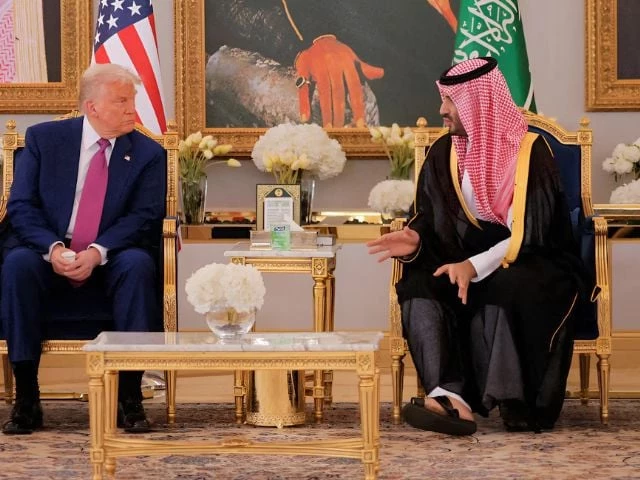
US President Donald Trump landed in Saudi Arabia early Tuesday, kicking off his first major international tour of his second term with a high-profile state visit in Riyadh.
Air Force One touched down at 9:49 am local time. Trump descended a purple-carpeted staircase to a warm greeting from Saudi Crown Prince Mohammed bin Salman.
The two leaders walked the tarmac together, briefly speaking with top Saudi officials before entering the Royal Terminal for a coffee ceremony.
Inside, they were joined by senior officials from both governments, seated in plush purple chairs beneath portraits of Saudi royals.
Among the US delegation were Secretary of State Marco Rubio, Defence Secretary Pete Hegseth, Commerce Secretary Howard Lutnick, and Energy Secretary Chris Wright.
The official welcome reflected Riyadh’s efforts to spotlight its global stature. Streets were decorated with American and Saudi flags, and Saudi F-15 jets escorted Air Force One during its final approach to the capital.
Later Tuesday, Trump is expected to attend a formal arrival ceremony at the Royal Court, a CEO lunch, bilateral meetings, and an agreement-signing session.
He will also deliver remarks at a US-Saudi Investment Forum and tour the Dir’iyah and At-Turaif UNESCO World Heritage site before a formal dinner with the crown prince.
The visit marks Trump’s return to the region he prioritised early in his first term and signals an attempt to renew strategic momentum.
Prince Mohammed, who has cultivated ties with Trump since 2017, is emerging once again as a key regional partner, particularly in US efforts to mediate conflicts such as the war in Ukraine.
A broader regional agenda
Trump’s trip includes stops in Doha, Qatar, and Abu Dhabi, United Arab Emirates, later this week.
While official discussions are expected to focus on investment and security partnerships, regional observers suggest more sensitive topics are unlikely to be raised publicly.
“It’ll be a key moment and a real opportunity to showcase what Saudi has to offer,” said Dina Esfandiary, Middle East lead at Bloomberg Economics.
Esfandiary noted the Middle East has changed significantly since Trump’s last visit during his first term, with Saudi Arabia now engaged in tentative diplomatic outreach to Iran and seeking to avoid entanglement in regional conflicts.
“The leadership in Riyadh will try to demonstrate that it is a stable country with a ‘no problem with neighbours’ policy, that it is open for investment, and that it has a lot of big, heavy-hitting ideas.”
"While energy remains a cornerstone of our relationship, the investments and business opportunities in the kingdom have expanded and multiplied many, many times over," Saudi Investment Minister Khalid al-Falih said as he opened the forum.
"As a result ... when Saudis and Americans join forces very good things happen, more often than not great things happen when those joint ventures happen," he said before Trump's arrival.
Trump is hoping to secure trillions of dollars of investments from the Gulf oil producers. Saudi Arabia had pledged $600 billion but Trump has said he wants $1 trillion from the kingdom, one of Washington's most important allies.
Private interests and quiet diplomacy
Despite the formalities, questions persist over potential conflicts of interest related to the Trump Organization’s ongoing real estate ventures in the Gulf.
The company, now managed by Donald Trump Jr. and Eric Trump, has active business interests in Saudi Arabia, Qatar, and the UAE.
No members of the Trump family are accompanying the president on this trip, though Eric Trump previously highlighted the importance of Gulf ties.
“This whole region is dependent on a strong America. And I hear that time and time again. I hear that from the biggest leaders in the Gulf,” he said in Dubai last month.
While Trump is unlikely to publicly address Saudi Arabia’s human rights record or gender equality during the visit, the Saudi government has reiterated its “deep commitment” to providing opportunities for all its citizens.
As Trump begins this high-stakes tour, both allies and critics will be watching for signs of how US policy might evolve in a region where economic ambition, political instability, and strategic rivalries remain tightly intertwined.






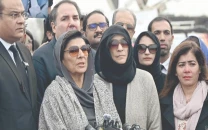

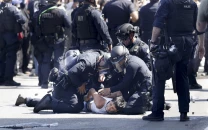
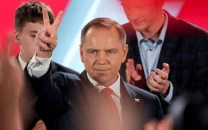
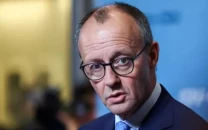
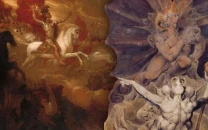
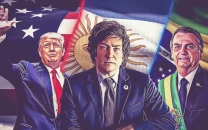

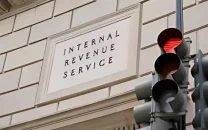

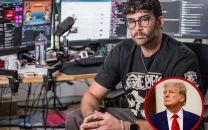
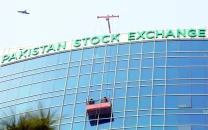
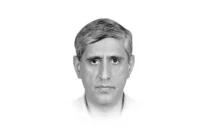
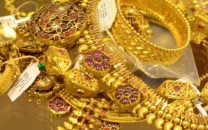
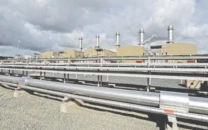
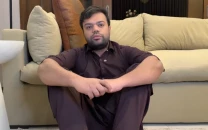

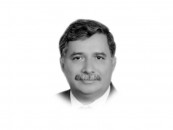

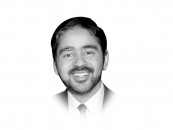

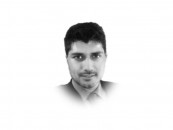

COMMENTS
Comments are moderated and generally will be posted if they are on-topic and not abusive.
For more information, please see our Comments FAQ